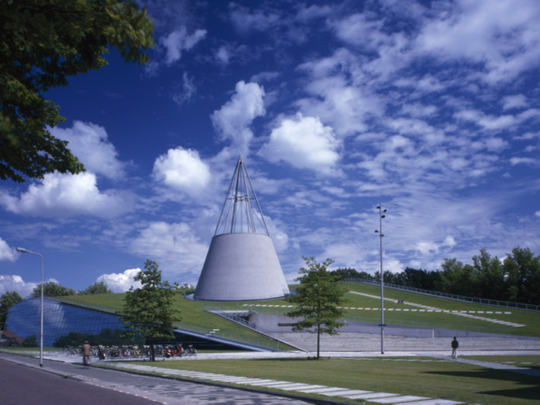
When visitors tour the sculptures of Rotterdam’s Museumpark, they are usually unaware of what lies beneath, where a subterranean car park doubles as the largest underground water storage facility in the Netherlands. Built at a cost of €11.2 million (about Dh53 million), it can store 10,000 cubic metres, enough to fill four Olympic swimming pools — but it prevents the city’s streets from flooding during extreme rainstorms.
Speaking at its inauguration in 2011, Alderwoman Alexandra van Huffelen, responsible for sustainability of the city centre and public areas, said: the project was one that would position Rotterdam as a model to other delta cities. “Preparing for the consequences of climate change enables us to ensure that the city will remain safe, accessible and attractive in future,” she said.
The facility is just one part of a €100 million initiative to climate-proof the Netherlands’ second largest city, around 90 per cent of which is below sea level. Similar water storage initiatives have water storage areas doubling up as sports facilities and playgrounds. Other constructs include rooftop gardens that absorb rain and carbon dioxide and reduce the urban island temperature effect.
Protection against flooding is a vital issue in the Netherlands, where 55 per cent of land is at risk of flood and each year the government spends roughly €1 billion on protection by dykes and dunes. Traditional water management programmes in the kingdom have involved the construction of high dykes and drainage windmills to hold flooding waterways and pump the land dry. With rising sea levels and global warming causing irregular climatic events, the emphasis is now on learning to live with water and not to fight it.
“Our collective DNA is mutating, away from flood resistance at any cost to flood accommodation wherever possible,” Renée Jones-Bos, the former Netherlands Ambassador to the US, said in an address to the American Planning Association National Planning Conference last year.
Efforts are underway across the country. In January, ground was broken on a €350-million river-widening project in the 2,000-year-old-city of Nijmegen as part of the €2.3 billion Room for the River programme, which aims to increase the discharge capacity of the Rhine from 15,000 to 16,000 cubic metres by 2016.
The Dutch are now also exporting this knowhow. Over the next two years, €2.4-million-a-year programme will be launched to provide countries with expertise on limiting the impact of water disasters. The programme is expected to help match countries with experts who can explore structural and sustainable solutions and improve economic opportunities for the Dutch companies.
As Prince Willem-Alexander, an expert on water management, is crowned the new King of the Netherlands, the country’s efforts to check the effects of water will only be strengthened.







